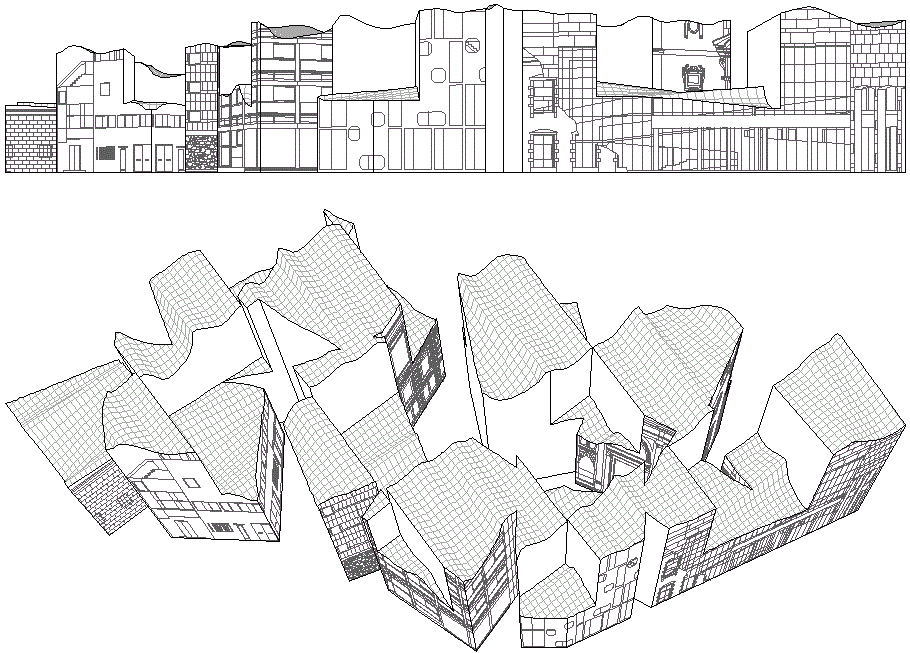2020.02.11

20021101.db Fragmented Architectural History Department elevational and aerial perspectives
2011.02.11
TOP 10 MUST HAVE ARCHITECTURE BOOKS
Le Corbusier, Oeuvre Complète 1957-65.
Dal Co and Forster, Frank O. Gehry: The Complete Works.
John Hejduk, Adjusting Foundations.
El Croquis 131/132 and El Croquis 134/135 (OMA/AMO/Rem Koolhaas).
James Stirling - Michael Wilford & Associates: la Nuova Galleria di Stato e Stoccarda.
van Berkel and Bos, MOVE.
Liane Lefaivre, Leon Battista Alberti's Hypnerotomachia Poliphili.
Oppositions 18.
Lotus International 35 or Learning from Las Vegas (first edition).
Luigi Ficacci, Piranesi: The Complete Etchings.
1999.02.11
Re: electromagnetism in the body
I'm now going to relate a story that may or may not have something to do with "feelings" and place.
I spent the summer of 1978 in Perry, Missouri (population 839) as a Historic American Building Survey (H.A.B.S.) student team member. Our team was surveying and documenting two small towns and a variety of domestic buildings that were to be demolished after our survey because the land was soon going to be under water once the Salt River Dam was complete. One of the buildings I surveyed along with Barbara Hendricks (a architecture student from Texas) was so remote that Barbara and I were dropped off in the morning and not picked up again until 4 o'clock in the afternoon. The house was named for Samuel Bell, and it was a simple 2 story farm house with a front porch, central hall, and a gable roof running from side to side. I soon discovered that we could easily get on the roof by going out one of the second story windows and onto the lower roof of the one story addition to the back of the house. I suggested we eat our lunch up on the ridge of the roof.
From the ridge of the roof a portion of the Salt River valley lay before us. The view was indeed beautiful, especially its rawness, and it was weird to think that this was all going to be under water in the near future. As a born and raised northeastern urbanite, all of rural Missouri offered me a plethora of new sensory impressions, and at this spot I found myself wondering what the "Indians" may have once thought of this place. Again, I was struck by the natural raw beauty of it all, and I said to Barbara, "I think this place is sacred." Barbara quickly retorted, "there are a lot of other places I'd call sacred before this."
About a month later, toward the end of the summer when most of the team was in the office drafting, our team historian, Travis McDonald (who is today the resident architectural historian of Thomas Jefferson's Poplar Forest), came into the office with exciting news -- demolition of the Samuel Bell house was put to a halt and the archeologists, who were also working in the region that summer, were to set up a dig there because it was discovered that the Samuel Bell house was built upon an Indian burial site. I immediately turned to Barbara and said, "I told you that place was sacred!"
In all honesty, I didn't experience any special "feelings" while I was at the Bell House. It just happened that the notion of sacredness entered my mind as I was giving a little thought to what I saw.
|